SRAM’s SX Eagle and Shimano’s Deore M6100 are entry-level 12-speed mountain bike drivetrains.
Both 1x drivetrains are pitched at similar price points, competing to be the top choice for budget-conscious riders looking to make the jump to 12-speed shifting.
In this article, we explain the features, upgradability and compatibility of the drivetrains, giving you the information you need to choose between the two.
SRAM SX Eagle and Shimano Deore M6100 at a glance
SRAM SX Eagle
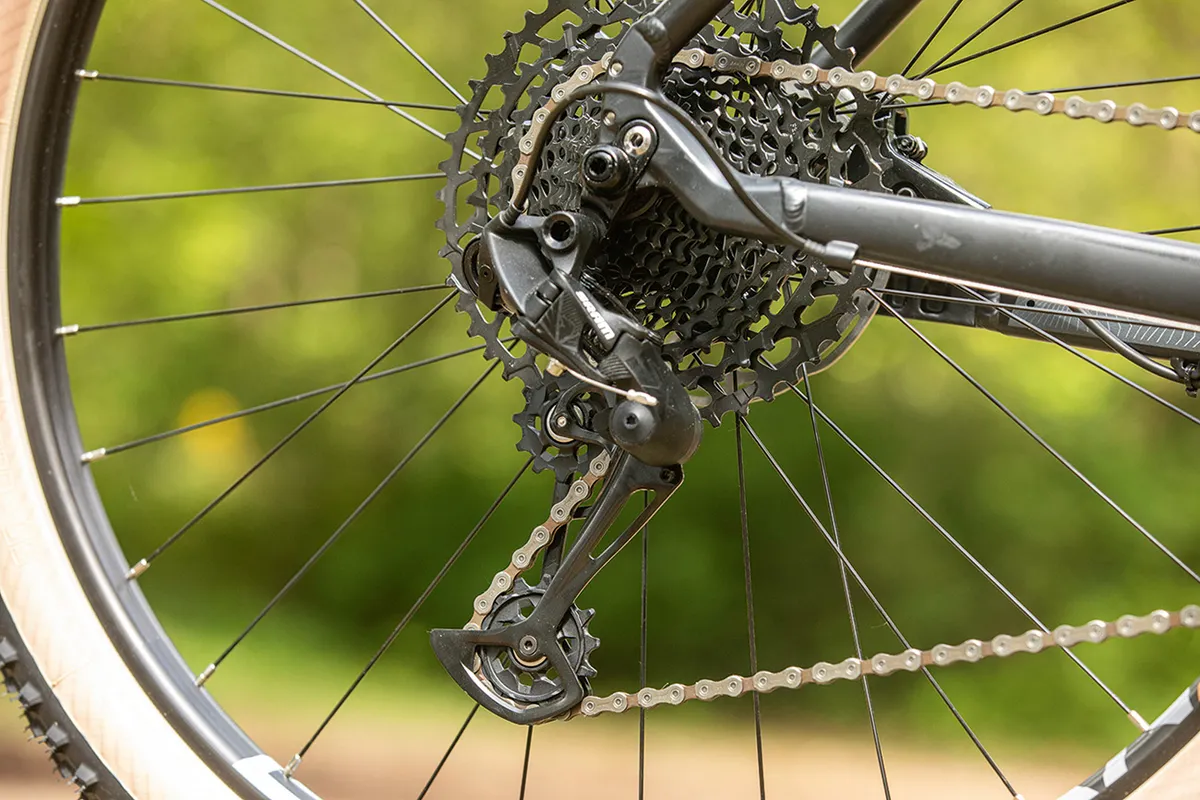
SX Eagle is the most affordable 12-speed mountain bike drivetrain in SRAM’s line-up. It’s not available as a full groupset in the aftermarket, but the components can be bought individually.
At full retail price, the SX Eagle drivetrain comes in at around £297.99 (excluding chain and bottom bracket). However, making the most of the heavy discounts found on many online bike shops, the drivetrain can be bought for less than half its original RRP.
Shimano Deore M6100

Deore M6100 is Shimano’s affordable 12-speed groupset, with a reputation for being reliable. It sits below the slightly pricier Shimano SLX groupset.
It’s priced similarly to SRAM’s SX Eagle at around £285.95 and packs in a lot of value for money. Bargain hunters will be able to save a considerable chunk of the full retail price. The Deore groupset is often heavily discounted in numerous online shops.
Price comparison
| SRAM SX Eagle | Shimano Deore M6100 |
| Derailleur - £85 RRP | £61.99 RRP |
| Shifter - £35 RRP | £32.99 RRP |
| Crankset - £98 RRP | £99.99 RRP |
| Cassette - £79.99 RRP | £99.95 RRP |
SRAM SX Eagle vs Shimano Deore – how do they compare?
Shifters
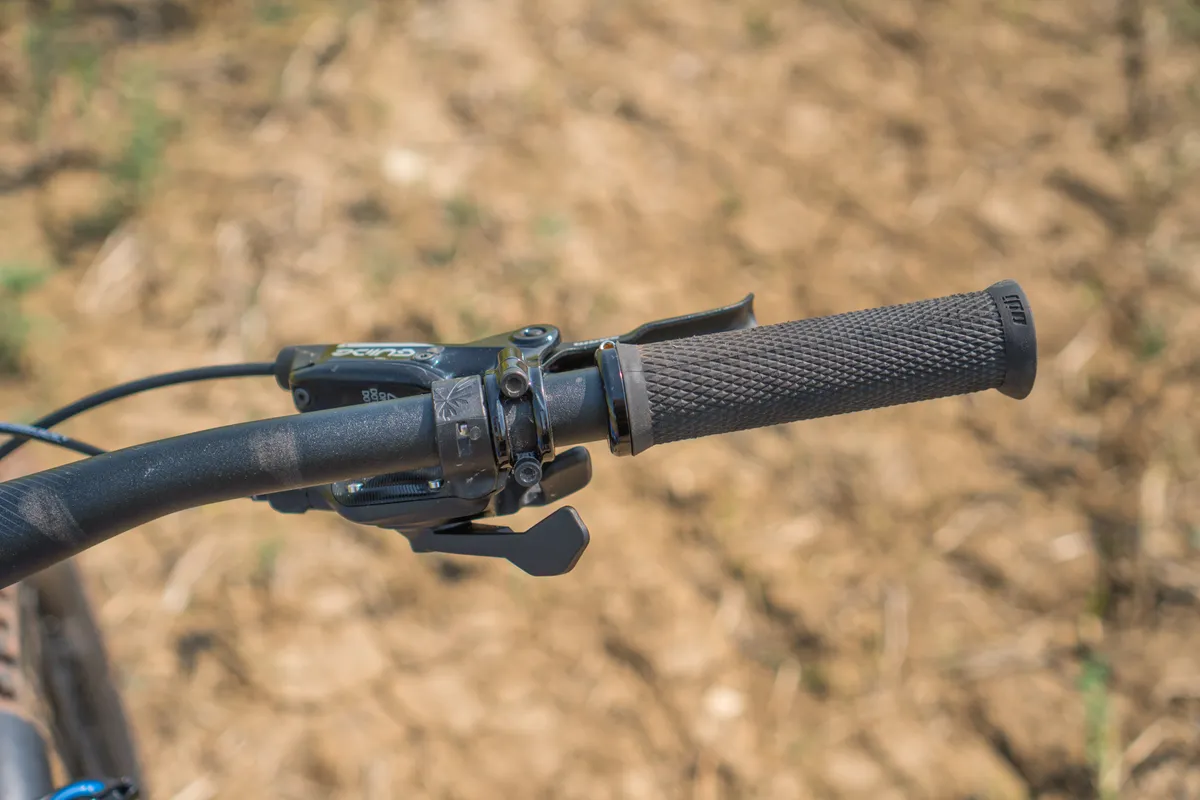
SRAM’s SX Eagle shifter features a largely plastic design. It uses the brand’s X-actuation design, enabling you to downshift multiple gears with one push. A single-click version is also available. The SX Eagle shifter misses out on SRAM’s Matchmaker clamp, which enables you to mount your shifter to the same clamp as your SRAM brake, improving cockpit ergonomics.
Shimano’s Deore shifter is also made mainly of plastic to keep costs down. It features Rapidfire Plus shifting for a three-gear downshift. Unlike the SRAM shifter, the Deore option is compatible with Shimano’s I-Spec brake levers for a neat cockpit.
Derailleurs
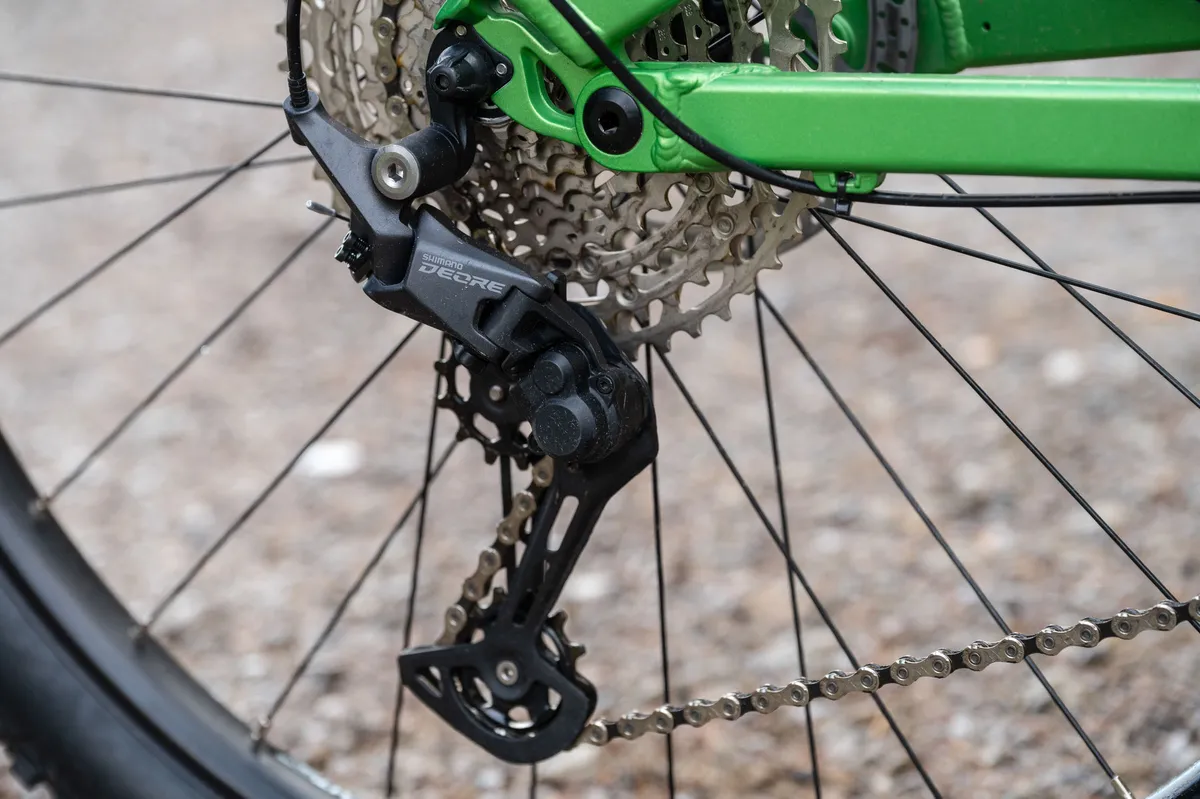
SRAM’s SX Eagle derailleur is basic and, although it’s cross-compatible with the rest of the Eagle range, it lacks some key features. Its biggest letdown is that it doesn’t have a clutch. The SX Eagle derailleur is compatible with Eagle cassettes up to 50 teeth.
The Shimano Deore derailleur features a slightly more premium construction and boasts the brand’s tried and tested Shadow RD+ clutch technology. The inclusion of a clutch is a big bonus and shouldn’t be overlooked because it reduces chain slap and improves chain retention. The Deore derailleur is compatible with 12-speed Shimano cassettes up to 51t.
Cassettes
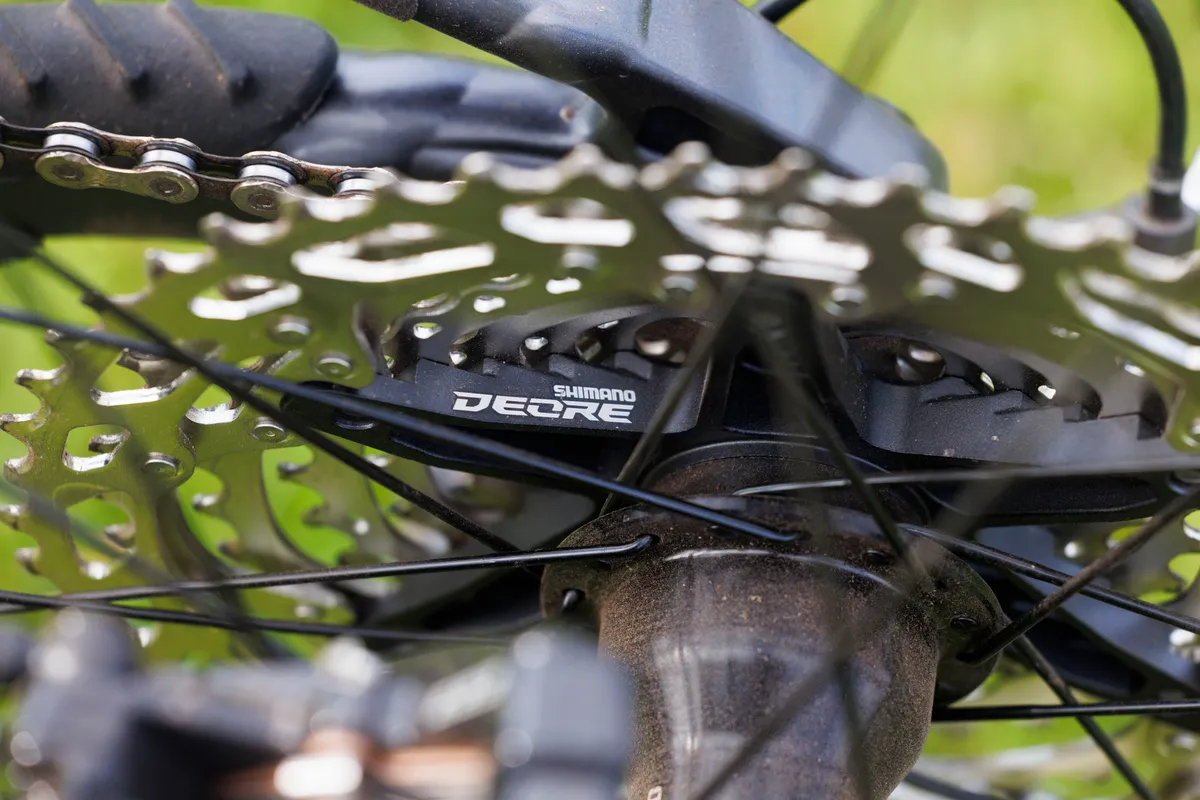
SRAM’s SX Eagle cassette is made of steel. It uses SRAM’s PowerGlide tooth design and features an 11-50t profile.
Unlike other SRAM Eagle cassettes (apart from the NX version), it doesn’t use SRAM’s XD freehub standard. Instead, the SX Eagle cassette is compatible with the splined HG freehub body, introduced by Shimano and used for many 8-, 9-, 10- and 11-speed drivetrains. This makes it a great option for riders looking to convert an older wheelset to 12-speed without having to change their freehub.
The Shimano Deore cassette also features a steel construction, using the brand’s Hyperglide+ tooth design. It has a 10-51t profile.
The cassette uses Shimano’s Microspline freehub standard, making it compatible with the rest of the brand’s 12-speed range but incompatible with older HG freehub bodies.
Cranksets

Both Shimano and SRAM use two-piece cranksets with direct-mount chainrings.
Shimano’s Deore crankset is available with a 30t or 32t chainring and 160/170/175mm cranks.
SRAM’s SX Eagle crankset comes with a 30t, 32t or 34t chainring and 155mm, 165mm, 170mm or 175mm crank lengths.
Gear range
SRAM SX Eagle and Shimano Deore are both 1x drivetrains with 12 gears. However, there is a difference in the overall gear range on offer from the two cassettes.
SRAM’s SX Eagle cassette has a range of 11-50t (454 per cent), while Shimano’s Deore counterpart has a wider 10-51t (510 per cent) range.
| SRAM SX Eagle | Shimano Deore M6100 |
| 11-13-15-17-19-22-25-28-32-36-42-50T | 10-12-14-16-18-21-24-28-33-39-45-51T |
| 454.54 per cent range | 510 per cent range |
Brakes
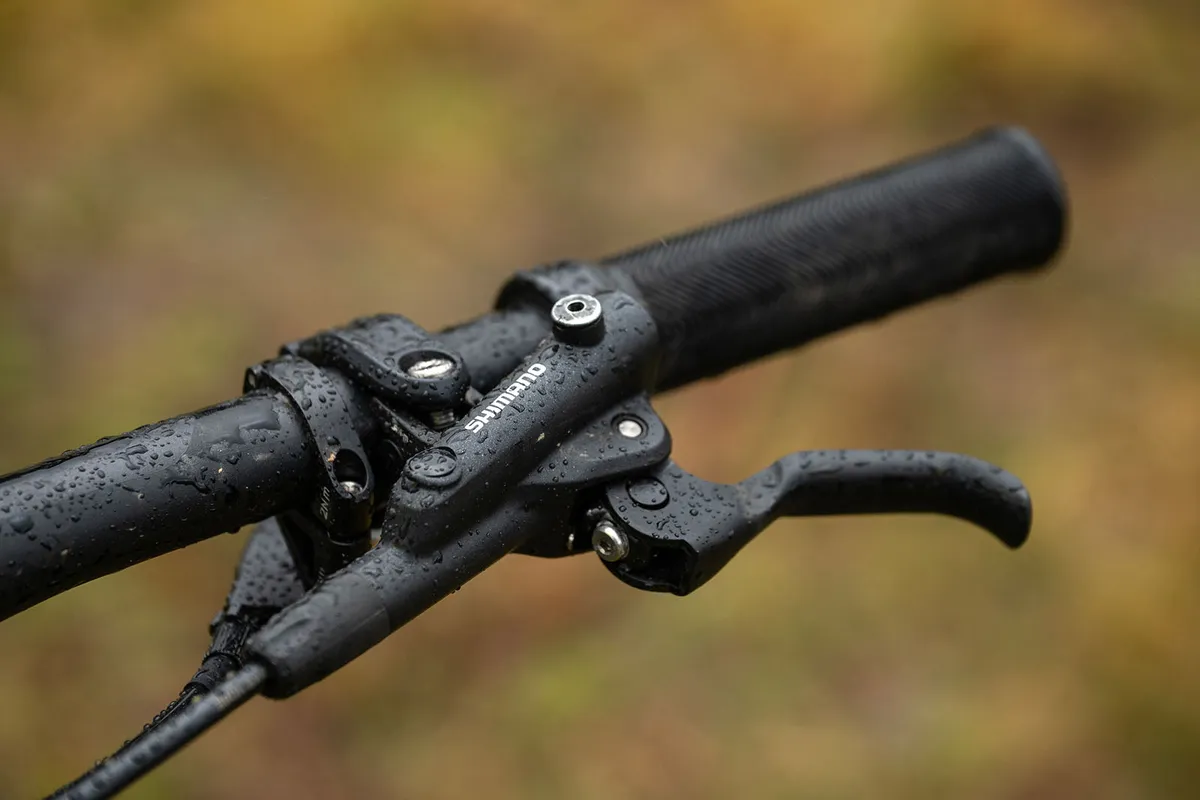
Shimano’s Deore M6100 ecosystem contains two brake models, differentiated by their piston design. Cross-country and light trail riders have the option of speccing a twin-piston brake, which shaves a bit of weight and bulk by sacrificing some braking power over the quad-piston version, which offers maximum performance for trail and enduro riders.
SRAM’s MTB groupsets are drivetrain-only, and the SX Eagle is no exception. Sitting in a similar position to Shimano’s Deore offering are the SRAM Level Bronze brakes. Also available in twin or quad-piston configurations, these brakes are among the latest entry-to-mid-range offerings in SRAM’s line-up.
Compatibility
As mentioned, SRAM’s entry-level SX Eagle cassette is designed to fit older HG freehub bodies, not SRAM’s own XD standard. This is great news for those looking to keep using their older wheel and hub setup in a change to 12-speed shifting, but it also limits upgradeability down the line because SRAM’s more premium cassettes won’t fit.
On the other hand, Shimano’s Deore cassette isn’t compatible with older HG drivers, but once you have invested in a Microspline freehub, you’ll be able to use all of Shimano’s 12-speed cassettes going forward.
So, should you choose Shimano Deore or SRAM SX Eagle?

Switching to 12-speed gearing is a big upgrade for any mountain biker and these entry-level drivetrains make it an affordable option.
We are fans of the reliability and performance of the Shimano Deore groupset and would recommend it to any rider looking for an affordable upgrade to 12-speed, especially if they already own a Microspline-equipped rear wheel.
While SRAM’s SX Eagle derailleur lacks a clutch and leaves a little to be desired, the HG compatibility of its cassette is attractive to budget-minded riders looking to keep using their old freehub. If possible, we would recommend investing a little extra in an NX Eagle derailleur, which features a clutch and is the next step up from SX.



